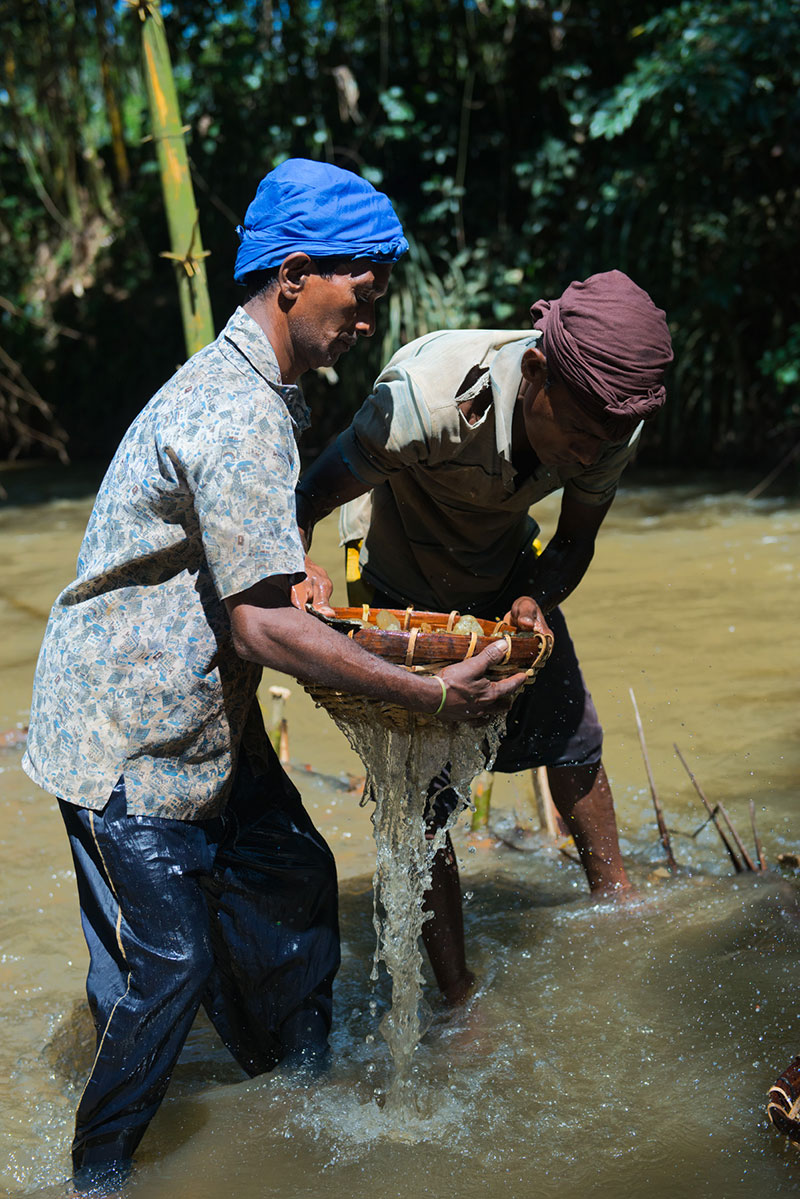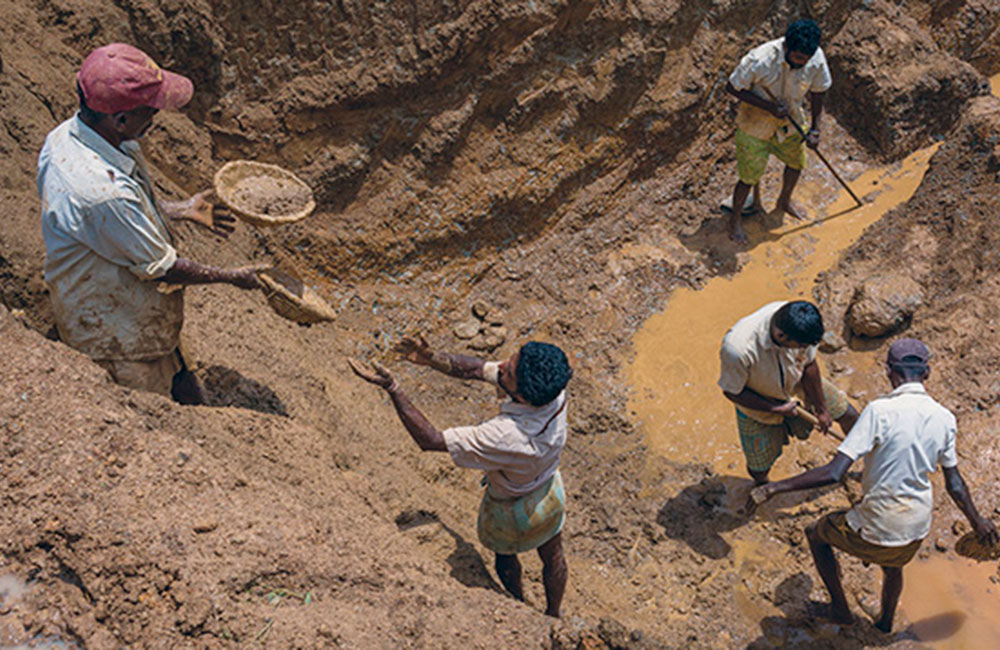Sri Lanka is one of the countries with the oldest gem and jewelry industries in the world. The country was also one of the first to begin the process of mining back in the 1900s. Most of the country’s gem deposits are in an area known as the Highland Complex, extending northeast to southwest and containing high-grade metamorphic rocks.
Sri Lanka boasts a true mine-to-market industry, both domestically and for export. A fascinating aspect of this is the harmonious and productive blend of tradition, experience and modernization. Mining is done primarily by use of traditional methods, and is small-scale by choice and design as such mines are considered to be less harmful to the environment and a more stable source of employment for more people, numbering 60,000 to 70,000 miners at present.
The industry functions through two bodies, the Sri Lanka Gem and Jewelry Association and the National Gem and Jewelry Authority. The SLGJA acts as the apex body that interacts with the Government of Sri Lanka as the industry representative in issue resolution and development of the sector. The latter officiates in terms of regulatory decisions.
As a pioneering mining country, Sri Lanka leads the board in advocating ethical mining practices from as early as the 1900s. The issuance of mining license was initiated during this time, making the island probably the first country to do so. A very important clause — children below the age of 18 years are strictly prohibited from participating in any mining-related activities — was included at the very first regulatory compilation. The regulatory bodies continue to focus on developing the human aspect in the industry, which is the primary capital since manual labor is the main method used in mining. In addition, the NGJA provides an insurance scheme that compensates mining-related accidents, injuries and casualties, which are few and far between.

River mining in Pelmadulla
On an environmental aspect, one of the main concerns is the covering of the pit once mining is completed. The responsibility lies with the mine owner. However, to ensure the closing, the Authority collects a refundable deposit when a license is issued. This fund is used for the closing of the mine, in case it is not done. The appointment of a mine inspector was another initiative made in the 1900s in order to guarantee the smooth, humane process in the mine as well as safeguard the environment.
This growing industry that thrives because of its ethical practices brings one of the highest revenues to the country. Historically Sri Lanka is world renowned for its gems, mainly the blue sapphire. At present the fame has grown far and wide through the extensive marketing initiatives conducted by the Sri Lanka Gem and Jewelry Association and NGJA. The FACETS International Gem and Jewelry Exhibition is the key annual event that has promoted the industry worldwide.
For the past 29 years the FACETS has been the perfect platform to experience the Sri Lankan Gem and Jewelry Industry in all its glory. Held annually in September, the exhibition showcases a wide range of gems and jewelry and has become a focal point for both local and international buyers and sellers. The exhibition also draws attention to the lapidary and educational aspects of the industry. Over the years FACETS has earned a significant amount of global recognition and is known for being the home for the very best of Sri Lanka’s topmost resource. Every year the exhibition draws more and more interest from experts and enthusiasts all across the globe.
